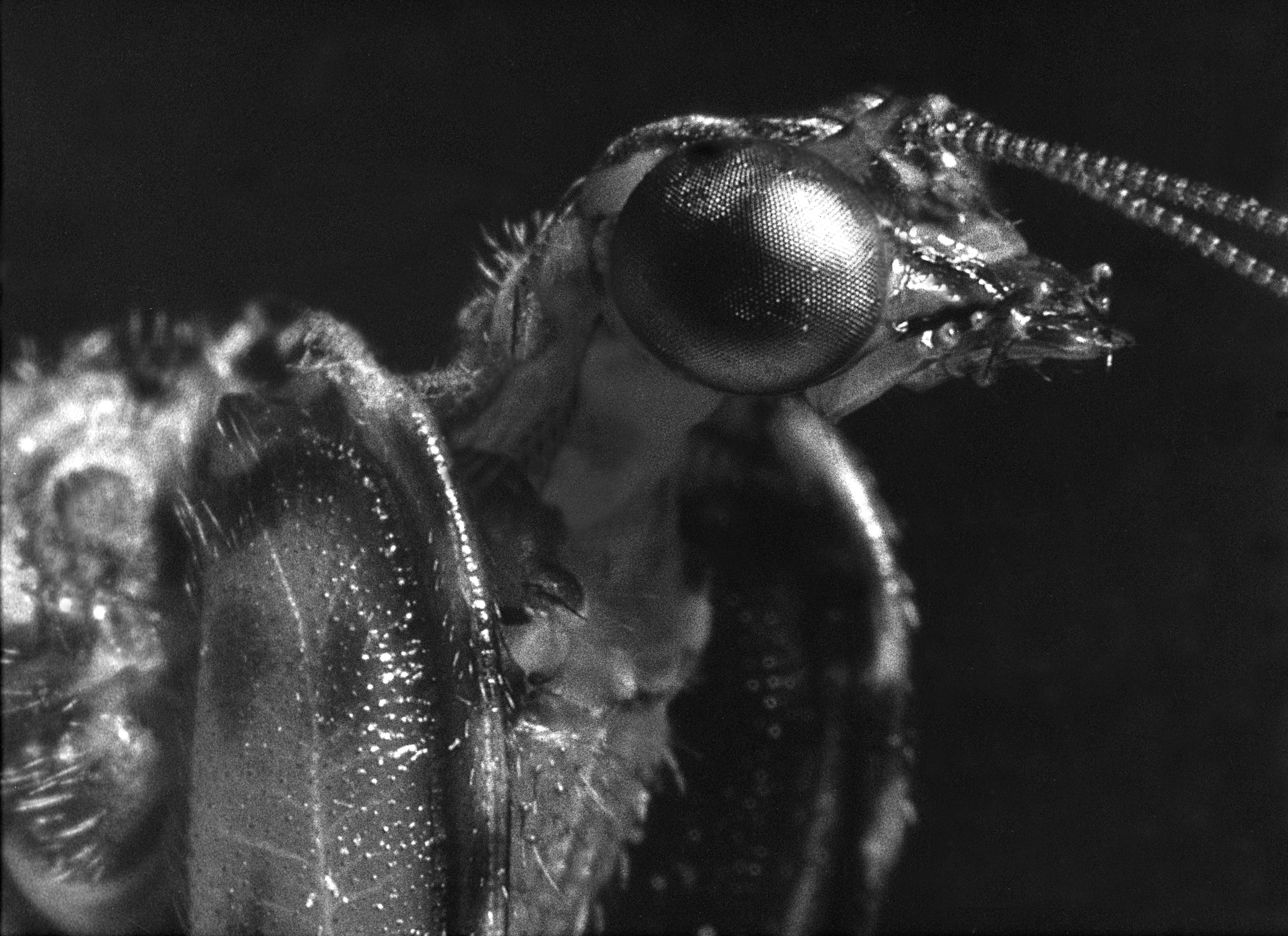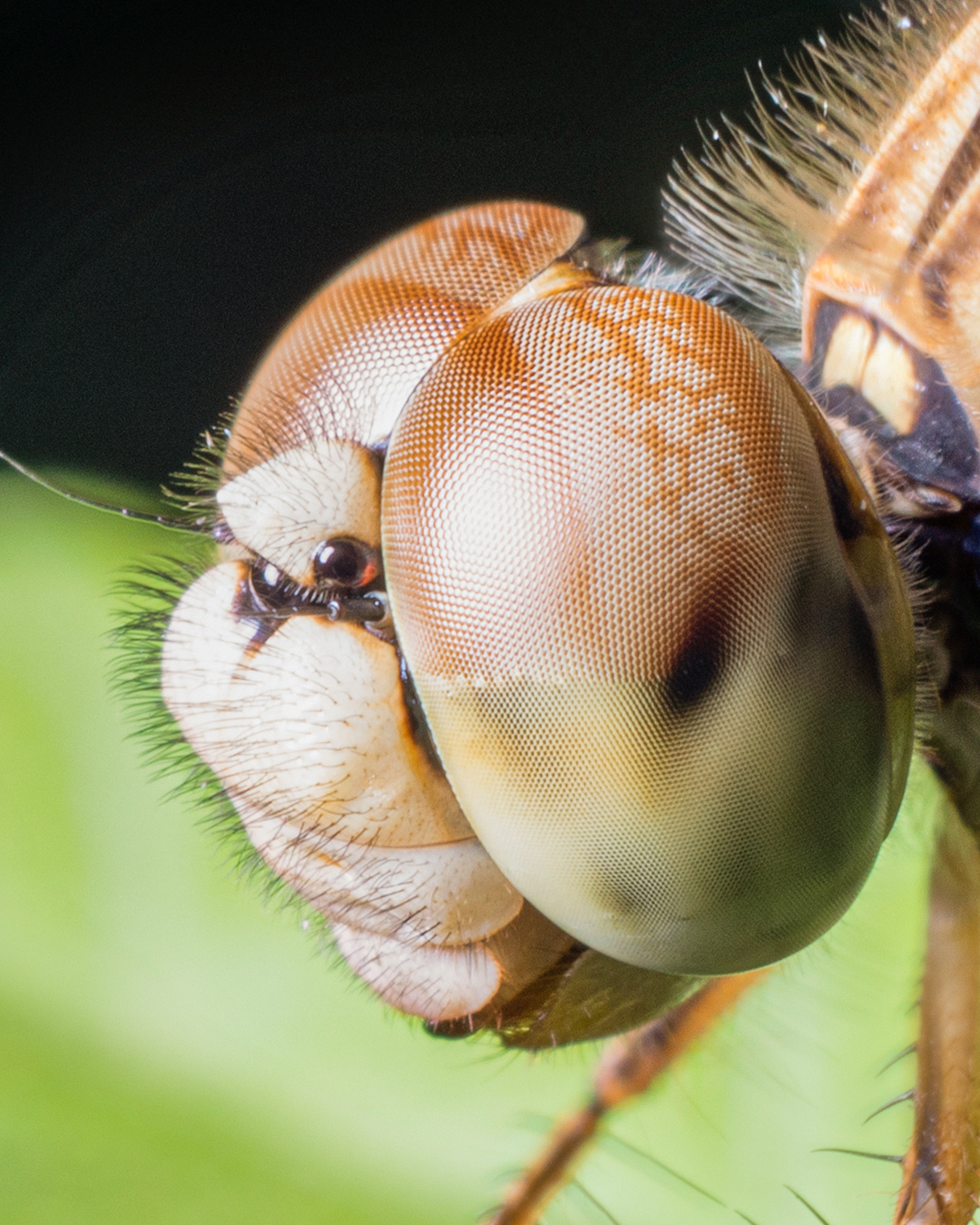Compound Eyes on:
[Wikipedia]
[Google]
[Amazon]
A compound eye is a visual organ found in
 Apposition eyes can be divided into two groups. The typical apposition eye has a lens focusing light from one direction on the
Apposition eyes can be divided into two groups. The typical apposition eye has a lens focusing light from one direction on the
 Good fliers like flies or honey bees, or prey-catching insects like
Good fliers like flies or honey bees, or prey-catching insects like
''Dragonfly Eyes''
movie (2017) by Xu Bing
''Dragonfly Eyes''
novel (2016) by Cao Wenxuan, English translation (2021) by Helen Wang
The Compound Eye
'
{{Authority control Arthropod anatomy Entomology Eye
arthropod
Arthropods ( ) are invertebrates in the phylum Arthropoda. They possess an arthropod exoskeleton, exoskeleton with a cuticle made of chitin, often Mineralization (biology), mineralised with calcium carbonate, a body with differentiated (Metam ...
s such as insect
Insects (from Latin ') are Hexapoda, hexapod invertebrates of the class (biology), class Insecta. They are the largest group within the arthropod phylum. Insects have a chitinous exoskeleton, a three-part body (Insect morphology#Head, head, ...
s and crustacean
Crustaceans (from Latin meaning: "those with shells" or "crusted ones") are invertebrate animals that constitute one group of arthropods that are traditionally a part of the subphylum Crustacea (), a large, diverse group of mainly aquatic arthrop ...
s. It may consist of thousands of ommatidia, which are tiny independent photoreception units that consist of a cornea
The cornea is the transparency (optics), transparent front part of the eyeball which covers the Iris (anatomy), iris, pupil, and Anterior chamber of eyeball, anterior chamber. Along with the anterior chamber and Lens (anatomy), lens, the cornea ...
, lens
A lens is a transmissive optical device that focuses or disperses a light beam by means of refraction. A simple lens consists of a single piece of transparent material, while a compound lens consists of several simple lenses (''elements'') ...
, and photoreceptor cell
A photoreceptor cell is a specialized type of neuroepithelial cell found in the retina that is capable of visual phototransduction. The great biological importance of photoreceptors is that they convert light (visible electromagnetic radiation ...
s which distinguish brightness and color. The image perceived by this arthropod eye is a combination of inputs from the numerous ommatidia, which are oriented to point in slightly different directions. Compared with single-aperture eyes, compound eyes have poor image resolution
Image resolution is the level of detail of an image. The term applies to digital images, film images, and other types of images. "Higher resolution" means more image detail.
Image resolution can be measured in various ways. Resolution quantifies ...
; however, they possess a very large view angle and the ability to detect fast movement and, in some cases, the polarization of light. Because a compound eye is made up of a collection of ommatidia, each with its own lens, light will enter each ommatidium instead of using a single entrance point. The individual light receptors behind each lens are then turned on and off due to a series of changes in the light intensity during movement or when an object is moving, creating a flicker-effect known as the flicker frequency, which is the rate at which the ommatidia are turned on and off– this facilitates faster reaction to movement; honey bee
A honey bee (also spelled honeybee) is a eusocial flying insect within the genus ''Apis'' of the bee clade, all native to mainland Afro-Eurasia. After bees spread naturally throughout Africa and Eurasia, humans became responsible for the ...
s respond in 0.01s compared with 0.05s for humans.
Types
Compound eyes are typically classified as either apposition eyes, which form multiple inverted images, or superposition eyes, which form a single erect image.Apposition eyes
 Apposition eyes can be divided into two groups. The typical apposition eye has a lens focusing light from one direction on the
Apposition eyes can be divided into two groups. The typical apposition eye has a lens focusing light from one direction on the rhabdom
The compound eyes of arthropods like insects, crustaceans and millipedes are composed of units called ommatidia (: ommatidium). An ommatidium contains a cluster of photoreceptor cells surrounded by support cells and pigment cells. The outer part ...
, while light from other directions is absorbed by the dark wall of the ommatidium. The mantis shrimp is the most advanced example of an animal with this type of eye. In the other kind of apposition eye, found in the Strepsiptera, each lens forms an image, and the images are combined in the brain. This is called the schizochroal compound eye or the neural superposition eye (which, despite its name, is a form of the apposition eye).
Superposition eyes
The superposition eye is divided into three subtypes; the ''refracting'', the ''reflecting'', and the ''parabolic'' superposition eye. The refracting superposition eye has a gap between the lens and the rhabdom, and no side wall. Each lens takes light at an angle to its axis and reflects it to the same angle on the other side. The result is an image at half the radius of the eye, which is where the tips of the rhabdoms are. This kind is used mostly by nocturnal insects. In the parabolic superposition eye, seen in arthropods such as mayflies, the parabolic surfaces of the inside of each facet focus light from a reflector to asensor array
A sensor array is a group of sensors, usually deployed in a certain geometry pattern, used for collecting and processing electromagnetic or acoustic signals. The advantage of using a sensor array over using a single sensor lies in the fact that an ...
. Long-bodied decapod crustaceans such as shrimp
A shrimp (: shrimp (American English, US) or shrimps (British English, UK)) is a crustacean with an elongated body and a primarily Aquatic locomotion, swimming mode of locomotion – typically Decapods belonging to the Caridea or Dendrobranchi ...
, prawn
Prawn is a common name for small aquatic crustaceans with an exoskeleton
An exoskeleton () . is a skeleton that is on the exterior of an animal in the form of hardened integument, which both supports the body's shape and protects the intern ...
s, crayfish
Crayfish are freshwater crustaceans belonging to the infraorder Astacidea, which also contains lobsters. Taxonomically, they are members of the superfamilies Astacoidea and Parastacoidea. They breathe through feather-like gills. Some spe ...
and lobster
Lobsters are Malacostraca, malacostracans Decapoda, decapod crustaceans of the family (biology), family Nephropidae or its Synonym (taxonomy), synonym Homaridae. They have long bodies with muscular tails and live in crevices or burrows on th ...
s are alone in having reflecting superposition eyes, which also have a transparent gap but use corner mirrors instead of lenses.
Other
 Good fliers like flies or honey bees, or prey-catching insects like
Good fliers like flies or honey bees, or prey-catching insects like praying mantis
Mantises are an order (Mantodea) of insects that contains over 2,400 species in about 460 genera in 33 families. The largest family is the Mantidae ("mantids"). Mantises are distributed worldwide in temperate ...
es or dragonflies
A dragonfly is a flying insect belonging to the infraorder Anisoptera below the order Odonata. About 3,000 extant species of dragonflies are known. Most are tropical, with fewer species in temperate regions. Loss of wetland habitat threate ...
, have specialized zones of ommatidia organized into a fovea area which gives acute vision. In the acute zone the eye is flattened and the facets larger. The flattening allows more ommatidia to receive light from a spot and therefore higher resolution.
There are some exceptions from the types mentioned above. Some insects have a so-called single lens compound eye, a transitional type which is something between a superposition type of the multi-lens compound eye and the single lens eye found in animals with simple eyes. Then there is the mysid
Mysida is an order of small, shrimp-like crustaceans in the malacostracan superorder Peracarida. Their common name opossum shrimps stems from the presence of a brood pouch or "marsupium" in females. The fact that the larvae are reared in thi ...
shrimp, ''Dioptromysis paucispinosa''. The shrimp has an eye of the refracting superposition type, in the rear behind this in each eye there is a single large facet that is three times in diameter the others in the eye and behind this is an enlarged crystalline cone. This projects an upright image on a specialized retina. The resulting eye is a mixture of a simple eye within a compound eye.
Another version is the pseudofaceted eye, as seen in Scutigera
''Scutigera'' is a centipede genus in the scutigeromorph (house centipede) family Scutigeridae, a group of centipedes with long limbs and true compound eyes (which were once thought to be secondary, re-evolved "pseudofacetted eyes"). It is co ...
. This type of eye consists of a cluster of numerous ocelli
A simple eye or ocellus (sometimes called a pigment pit) is a form of eye or an optical arrangement which has a single lens without the sort of elaborate retina that occurs in most vertebrates. These eyes are called "simple" to distinguish the ...
on each side of the head, organized in a way that resembles a true compound eye.
Asymmetries in compound eyes may be associated with asymmetries in behaviour. For example, ''Temnothorax albipennis
''Temnothorax albipennis'', the rock ant is a species of small ant in the subfamily Myrmicinae. It occurs in Europe and builds simple nests in rock crevices.
Description
This species has the typical ant body pattern of head, mesosoma and metas ...
'' ant scouts show behavioural lateralization when exploring unknown nest sites, showing a population-level bias to prefer left turns. One possible reason for this is that its environment is partly maze-like and consistently turning in one direction is a good way to search and exit mazes without getting lost. This turning bias is correlated with slight asymmetries in the ants' compound eyes (differential ommatidia count).
The body of '' Ophiomastix wendtii'', a type of brittle star
Brittle stars, serpent stars, or ophiuroids (; ; referring to the serpent-like arms of the brittle star) are echinoderms in the class Ophiuroidea, closely related to starfish. They crawl across the sea floor using their flexible arms for locomot ...
, was previously thought to be covered with ommatidia, turning its whole skin into a compound eye, but this has since been found to be erroneous; the system does not rely on lenses or image formation.
Cultural references
"Dragonfly eyes" (Chinese: 蜻蜓眼 ''qingting yan'') is a term for knobbly multi-coloured glass beads made in Western and Eastern Asia 2000–2500 years ago.https://www.cambridge.org/core/journals/microscopy-and-microanalysis/article/abs/nondestructive-analysis-of-dragonfly-eye-beads-from-the-warring-states-period-excavated-from-a-chu-tomb-at-the-shenmingpu-site-henan-province-china/E2FCF854D5324115F503E1643C33BDBD DOI: https://doi.org/10.1017/S1431927612014201 Owing to the multiple views and stimuli, compound eyes or dragonfly eyes have become a feature in art, film and literature, particularly in the 2010s. For example: * '' The Man with the Compound Eyes'', novel (2011) by Wu Ming-yi, English translation (2013) by Darryl Sterk''Dragonfly Eyes''
movie (2017) by Xu Bing
''Dragonfly Eyes''
novel (2016) by Cao Wenxuan, English translation (2021) by Helen Wang
See also
* Arthropod eye * Eye * PseudopupilReferences
External links
*The Compound Eye
'
{{Authority control Arthropod anatomy Entomology Eye